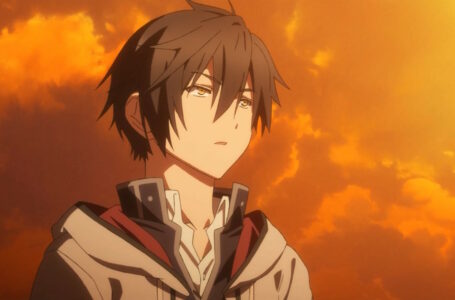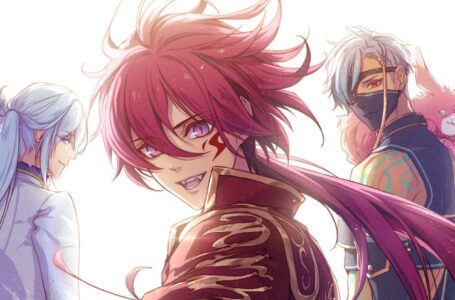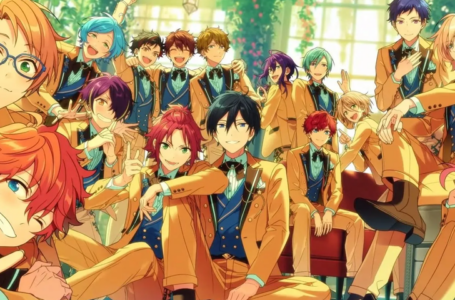Dairoku: Agents of Sakuratani – mythological boys will leave you wanting more
So far as commercial otome titles go, Dairoku: Agents of Sakuratani is the last of the big hitters to come out of 2021, and the second of Aksys’ previously announced lineup of otome localisations. Those who played its original Japanese release noted that it was a little lacking in certain qualities that we are accustomed to in the genre — but is this still true for the western release?
Only one way to find out! Here are our thoughts on Dairoku: Agents of Sakuratani. A big thank you to the publisher for providing us with a review code!
Story
Players are placed into the role of Shino Akitsu, who has been able to see spiritual entities ever since she was a child. She is swiftly recruited into the Occult Action Department after she unintentionally draws the eye of the game’s poster boy, the ayakashimori Semi, who takes notice of their shared skills of seeing and detecting mythological beings. As a result of that fateful meeting, Shino is employed to monitor the spirits who traverse the town of Sakuratani.
I originally drew parallels to the excellent Café Enchanté with Dairoku: Agents of Sakuratani’s setup here, and in actuality, the two are surprisingly similar even in material!
A few routes in Dairoku: Agents of Sakuratani have an unexpected amount of angst — for example the game touches upon subjects such as the cost of living forever, vengeance and loss — but otherwise, it delivers a mostly relaxing and cosy adventure.
I use this word “adventure” loosely, though, as the game can basically be summed up as having a lot of potential — but ultimately it falls a bit short in presenting a fully fleshed-out plot with enough substance and sense of consequences to be truly satisfying.
Despite its otherworldly premise and characters, the game explores its world with a somewhat slice-of-life approach, depicting the meshing of older traditions and folklore with a modernised twist, such as humanoid supernatural entities learning how to work a mobile phone. You’ll be going into Dairoku: Agents of Sakuratani for its lovable characters, humorous dialogue and endearing scenarios — because sadly, for the most part, everything else falls into mediocrity.
Heroine
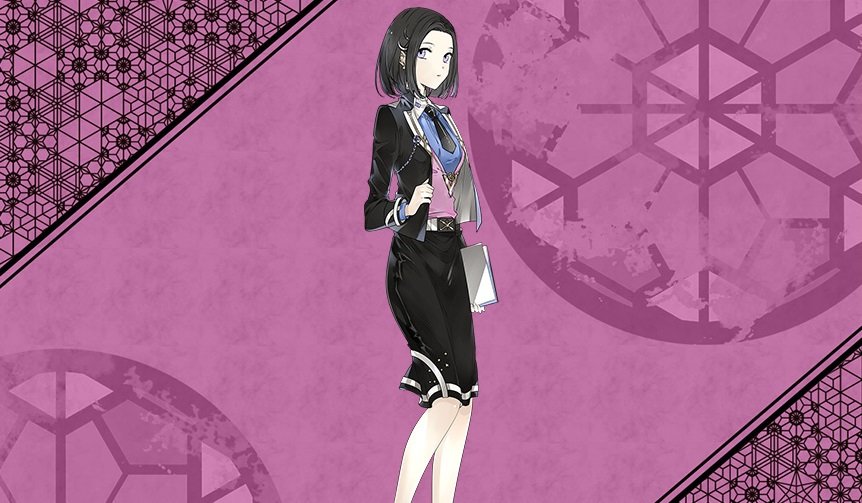
While I was thrilled to see a heroine who is more of a tomboy — unlike the usual type of fair maiden we’re cast in the role of — Shino does not really stand out from the crowd.
The game attempts to make quick work of establishing Shino as something unique through character traits such as her spiritual awareness and how much of a different take she is on the heroine formula. She doesn’t like wearing makeup, for example, and greatly prefers exploring the wild like a free-spirited, tree-climbing kid. Refreshing right off the bat to say the least — and additionally, she is yet another case of a working leading lady in the genre.
She is similar to Cupid Parasite’s Lynette in that regard, and this at least makes her stand out from the many otome heroines who are still in school or simply too young to feel relatable to any player in their 20s or above.
She has the drive to improve herself in this new career path she’s found herself in, which is a nice trait to see here — and one that will cause audiences to support her. She can also be quite quippy and playful in certain conversations with characters, which adds to the overall sense of comedy in Dairoku, makes her likable, and establishes good chemistry with the cast.
Both Shino and the love interests have “personal issues” in their profiles, which is a neat addition that helps us to understand the characters more before starting our journey with them. In Shino’s case, she worries about her skills in her new work environment, and this is a relatable hook to establish her current feelings and goals as well as getting the audience on board with her. It doesn’t take long for us to start looking forward to witnessing her development — though unfortunately the majority of the routes leave a lot to be desired despite this solid starting point.
Despite those who reviewed the Japanese original finding Shino a highlight of the game, I ultimately found her completely forgettable. It’s an unfortunate takeaway for her considering how excited her unconventional setup had me — but she does end up as little more than an observer of events in the majority of routes.
Love interest routes
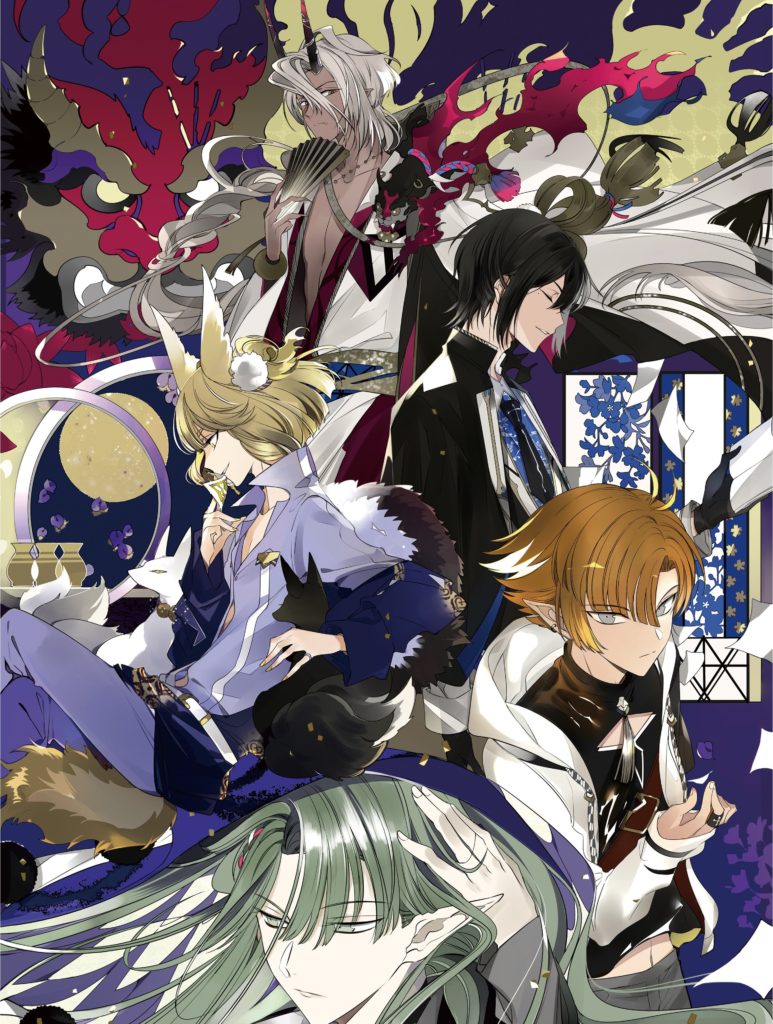
All of the love interests’ routes are available to play through as soon as you start the game, and it’s even possible to end up on the finale route right from the get-go. It’s an unconventional structure for an otome game, but when you consider the story is fairly barebones it makes a certain amount of sense; there’s not much to be “revealed” in the grand scheme of things.
So it should be no surprise that there is not really a suggested route order for the game, save for poster boy Semi being left for last because of his significance to the backstory of Sakuratani. Additionally, the first portion of each route consists of scenarios involving a handful of characters, whilst the true character routes start in the latter sections, within four chapters or so.
There are three endings within each route – Romance, which is the best ending; Friendship, aka the normal ending; and Lost Love, which is, of course, the bad ending.
Hira
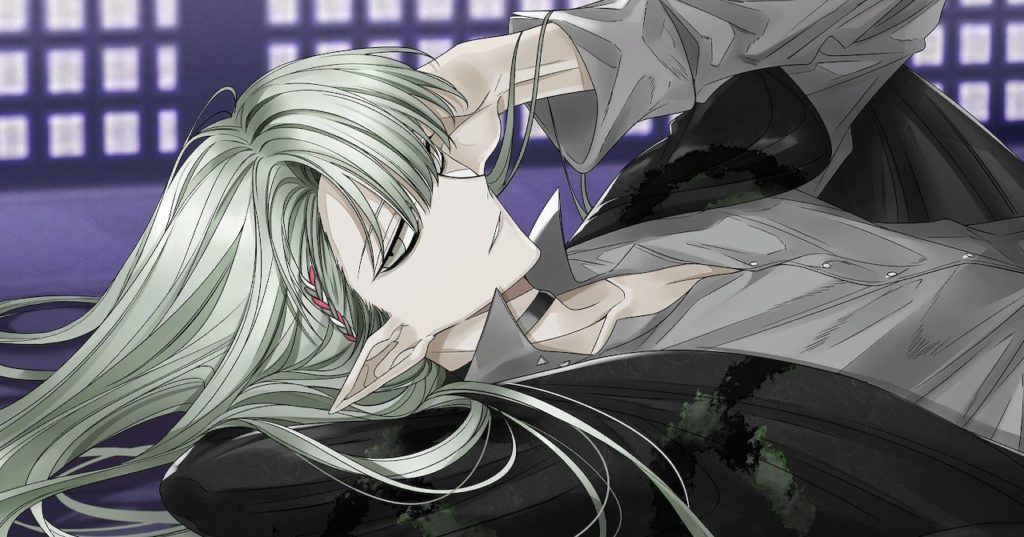
Kobayashi Yuusuke voices the lazy and distant tengu Hira. You might have heard his voice before in mobile otome titles such as Okita Suji from Destined to Love: Ikemen Samurai Romances and Yuli Norbert from Ikemen Royal Palace: Midnight Cinderella. He also plays Takamura Tomonari in Kimi wa Yukima ni Koinegau, which will be localised in the near future.
Hira is a shut-in who leaves all the work to his aide, Takao, and is not at all concerned with the goings-on within his world, let alone anything else for that matter. The relationship development between him and the Heroine is one of the better ones in the game, since he initially presents a massive barrier of being a reluctant listener to her and having a distinctly kuudere edge.
He subtly expresses his developing soft, squishing feelings of affection for the heroine gradually over time. Shino frequently attempts to close the distance between them in his route, and this element of their relationship makes up the majority of the route’s runtime. It’s unfortunate to say that this route completely lacks anything interesting and substantial enough story-wise to make a re-run desirable.
At least the moments of them growing closer are quite endearing considering Hira’s archetype, but he ranks as my least enjoyed route for how inherently incompatible the pair of them are. At least Shino’s personality here shines more so than the other routes, since she shows plenty of motivation and backbone in pursuing a bond with Hira — that, ultimately, is the main highlight of this route in the end.
Shiratsuki
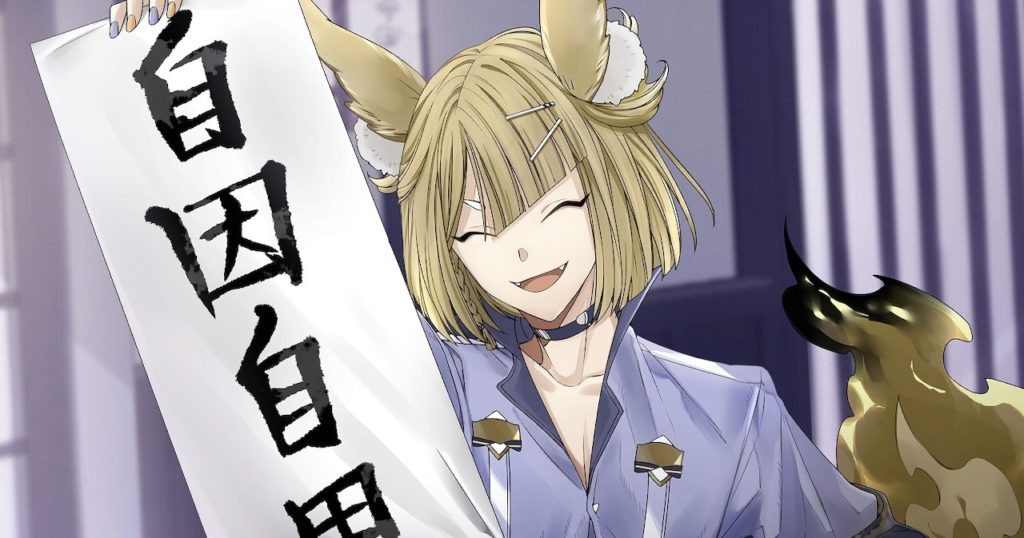
Sakurai Takahiro voices the playful, mischievous and fun-loving nine-tailed kitsune yokai Shiratsuki; he’s best known for voicing Mukami Ruki from Diabolik Lovers, Astrum from Period Cube, Alma from Bad Apple Wars and Saidani Umetarou from Bakumatsu Renka Shinsengumi.
Shiratsuki is another genki love interest to add to my ever-expanding list of types I’m immediately smitten with. He’s an adorable bundle of positive and outgoing energy that bounces off the heroine’s more sensible personality wonderfully.
He also has a particular quirk in his speech of talking old fashioned; this juxtaposes nicely with his youthful energy, and adds another layer to his characterisation that makes him stand out from the rest of the love interest pool. His playfulness and passion for fashion masks just how powerful he truly is, and he conceals his troubles and woes about humans who attempted to take advantage of him in the past.
However, while he is an entertaining character and love interest, his route lacks substantial and engrossing events, and presents a woefully unappealing and disappointing depiction of a romantic relationship progression with the heroine.
It’s ultimately saved through how Shiratsuki and Shino have one of the best chemistries of the pairings. It also probably helps that it’s very clear that Shiratsuki is interested in Shino from the start of proceedings, so the romantic build-up is only really necessary from Shino’s side. It presents a cute and wholesome dynamic, but while the setup of Shiratsuki’s personal growth is appealing, it is ultimately let down by it feeling entirely inconsequential and meandering.
Akuroou
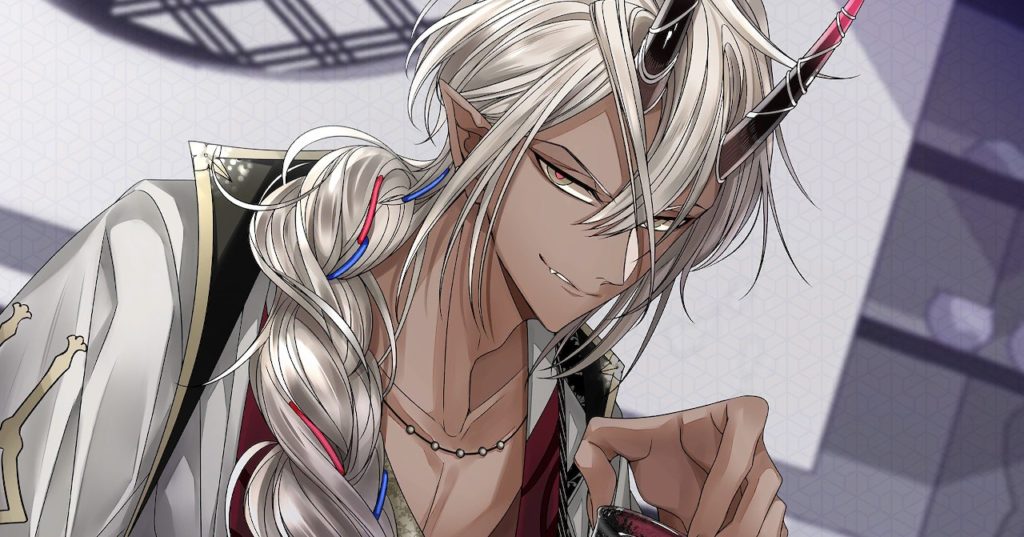
Suzuki Tatsuhisa voices the only oni of the love interest pool. We’ve previously seen him credited as Vinfleit from Palais de Reine, Mukami Yuuma from Diabolik Lovers, and Kurosaki Ranmaru from Uta no Prince-Sama.
Akuroou acts as a parental figure to the majority of the cast with an air of authority and the ability to act as a natural-born leader type — one who keeps his cool and demands attention and respect with ease.
Despite his devilish appearance, don’t judge him too quickly; he has many endearing interests such collecting cat merchandise, and has a sympathetic backstory. When his “baggage” finally catches up with him it’s surprisingly emotional, fascinating and consequential — unlike many of the other character routes.
For me, this made Akuroou easily stand out as the best route of the game, and it seems that this opinion is near-unanimous within the western community as of now. Not only does he have arguably the most appealing character design to draw your attention initially — it’s safe to say I fell prey to it at least — his route strikes a pleasing balance of plot relevancy, humour and a steady feeling of progression in the development of his romantic relationship with the heroine.
The integration of human technology with the supernatural world is best utilised here in Akuroou’s route to show their bonding – it’s cute, subtle and adds the most to the world-building as a result.
And the compliments don’t end here, since Shino is at her best within Akuroou’s route as well, having a sense of agency with the events that transpire through her own actions and decision making.
On a final note, the climax of his route will bring back flashbacks of one of Café Enchanté’s routes for better or worse – it may have been typical, but it made for the most entertaining route still. I’m happy to have played Dairoku: Agents of Sakuratani for his route alone!
Shu
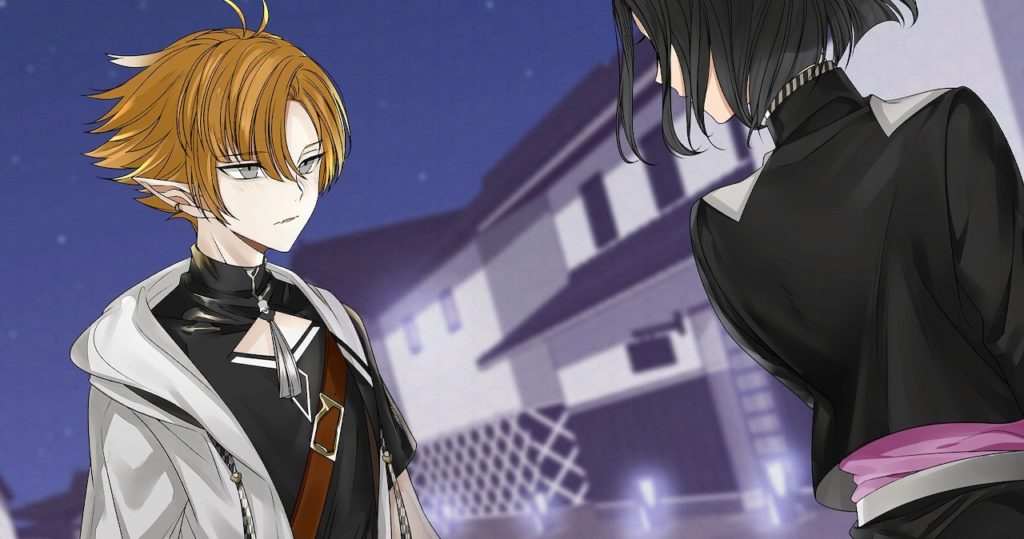
Oosaka Ryouta voices the yokai snake Shu, and you may already know him in the west as Ayasaki Kai from Princess Closet.
Shu sticks to himself due to being both a tsundere and part of the Mitsuchi — a family who stays outside the business and interactions of all the other residents of Sakuratani. As a result, Shu has a layer of mystery that the other love interests lack, since Shino has to actively pursue him in order to even get to know him.
Once on his route, his ego is on full display, as he is quite a snob and feels superior to others. Humorously, he has an endearing side to him through his vulnerability, and especially when accidently showing how much of a lightweight he is. Most importantly, though, he has the best character development of the love interests, as he gradually learns to be humble and more down to Earth.
That said, his route once again feels somewhat lacking despite the stepping up of the stakes involved. By the time I reached this point in Dairoku, the writing had started to feel repetitive and extremely conventional in a very disappointing way.
Semi Tokitsugu
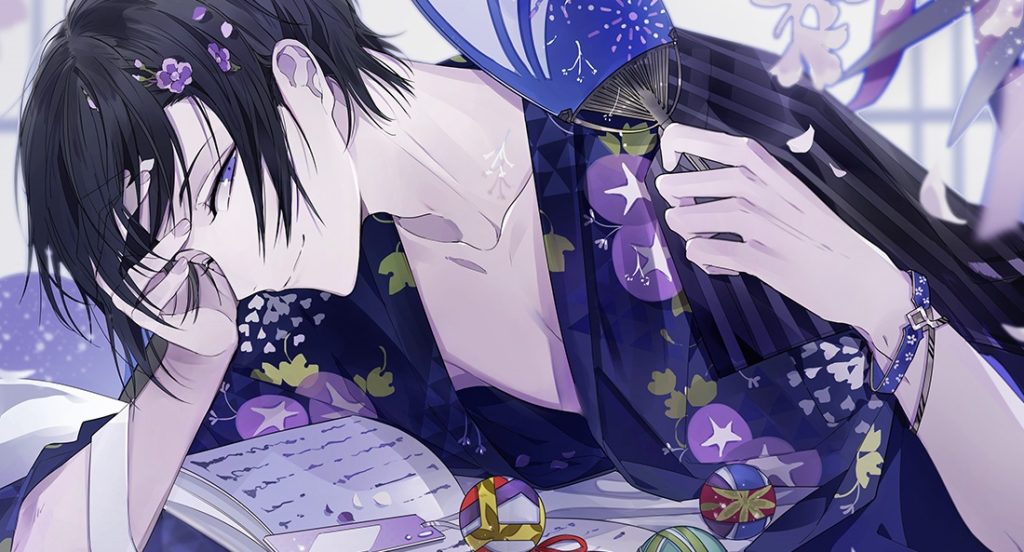
Semi is a fellow co-worker and senior to the heroine, and is extremely supportive of her throughout the game, no matter the character route she happens to be on. Portrayed by Toyonaga Toshiyuki (Orlok from Piofiore: Fated Memories and Natsume from EPHEMERAL), he is a massive tease to almost everyone in the cast, and is always one of the most enjoyable to see converse with the other characters for this reason alone.
Semi’s route delves into the work-lifestyle of what their job entails, and his background and familial issues. As mentioned before, Semi’s route is the only one to touch upon significant story-relevant details, and feels very contained as an office romance.
While still not the best compared to other games, it is at least serviceable for being the “main route” that adds some much needed substance to the story — although by the time I reached this route, I would still call it too late at this point to really save the game.
An easy-going otome
All of the above said, a low-stakes plot is to be expected for a character-centric game. Fortunately, the entire cast here is very likeable and extremely enjoyable to spend time with. The focus of development was clearly on the game’s character dynamics, scenarios and dialogue.
Both humorously and regrettably, the game has a ruthless amount of “side character syndrome”, considering how loveable and attractive many of the incidental characters are — I wanted more time with characters such as Hajun, Kokko and, easily my favourite, Shuten. His voice actor is even Ono Yuuki, the voice of Ignis Carbunculus from Café Enchanté, Saeki Yuzuru from Collar x Malice and Hameln from OZMAFIA!! — the teasing is unreal!
As far as the writing goes, there are a suspicious amount of events that transpire in Dairoku: Agents of Sakuratani that are kickstarted by rumours. It makes for an especially weak narrative choice for the majority of its routes, since it feels repetitive; the narrative comes across as being too dependent on hearsay than actual truth.
There are four names credited as the writers of the title, and only one will likely be familiar in the west: Oogi Saya, who was wrote the routes in Period Cube — which also ended up with a somewhat mediocre reception among western fans in particular. The routes here come across as very poorly created; there’s a sense that they were written to fulfil a “need” for drama, but end up feeling mostly inconsequential and drawn out as a result.
My biggest gripe with the story is how it does far too much telling and not nearly enough showing. For example, the very start of the common route skips out on ever exploring some of the most potentially exciting plot developments, such as Shino’s training for the position and introduction of her fantastical page. Even the exploration of Sakuratani itself — you know, the setting that is part of the game’s title? — was over in a heartbeat.
It’s probably worth noting at this point that I can’t remember a common route that took me longer to get through in recent memory than Dairoku: Agents of Sakuratani; it’s all because of its meandering progression. However, I found the final route the most troublesome in its narrative, since the majority of it could have probably been scrapped in favour of better relationship progression within the character routes to make them feel more believable and genuine — or perhaps simply providing more substance to the revelations in the final route.
The routes here have extremely lacklustre resolutions that are either resolved too quickly, or not explored enough. Ultimately, the game comes off as completely low-stakes, which will be unsatisfying for otome veterans — though on the plus side it does result in a title that is quite approachable for newcomers who prefer to dip in and out at a leisurely pace, and those who want to take a break from the darker otomes we’ve seen on the Switch lately.
Someone say romance is dead?
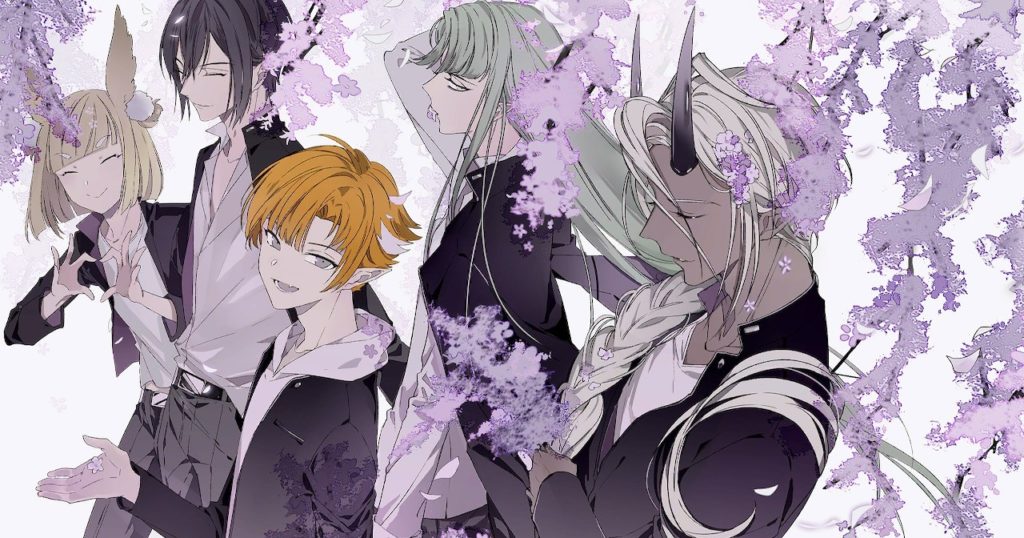
A particular issue I had with all Dairoku: Agents of Sakuratani’s routes was how the romance was depicted. While our heroine is as dense as they come, it was most certainly entertaining enough to witness the eventual love confessions and how the non-human guys had different takes on admitting their feelings.
But the fact that these moments almost always came out of nowhere had me disappointed. This is due to how the routes progressed — not just in terms of how their uneventful nature challenged by attention span, but also in how supporting characters such as Yakumo and Kinka displayed more chemistry than the heroine and love interests more often than not.
Furthermore, despite the routes each having three endings — with the natural assumption being that the “Romance” ending would be the “best” — the platonic endings tend to play out much better with regard to plot and character development. This extends to the game’s side characters, too, who receive much better treatment in the “Friendship” endings.
It’s a puzzling decision for the genre — and while on the one hand it’s refreshing for taking a somewhat different approach, on the other it highlights the lack of a key element that many people are looking for in otome titles. Something truly feels amiss here.
The bottom line is that you shouldn’t go into Dairoku: Agents of Sakuratani expecting the same level of romance as in other Switch otomes — or other otomes in general, for that matter. While the scenarios between the heroine and love interests are cute, the progression of the various relationships feels poor and mismanaged.
The game does make up for all this with its endearing cast, and especially the varied personalities of the love interests. None of the love interests go through a sudden heel turn in their bad endings, nor do they display any truly troublesome tendencies. They are each likeable in their own right — and it’s safe to say that otome veterans will find something to like in at least one of them.
System and design
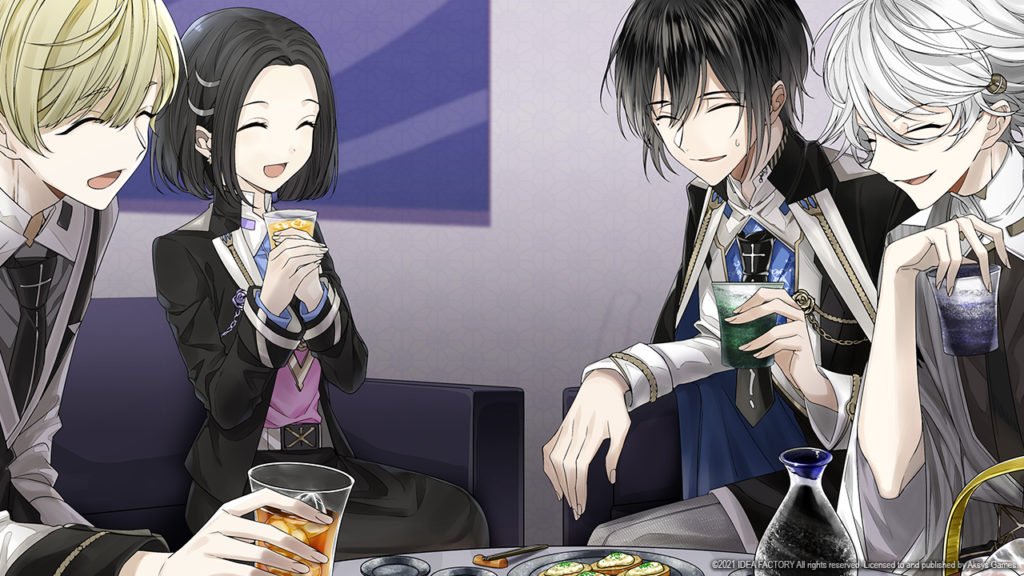
The UI is slick and delivers on its otherworldly motif with dark visuals and a consistent purple and black colour palette. Its menu options offer nothing out of the ordinary, but its flowchart is presented and utilised particularly well here, even better than other titles within the same genre. It helpfully lays out basic information — much like how Cupid Parasite does — to indicate decision points and CGs; this makes for easier backtracking to complete the gallery and other extras.
The game also features “Character Private Files” that are unlocked once a love interest’s route is cleared, and once again in comparison to other otome, the offerings here are severely lacking. Café Enchanté covered many questions during these in an interview-like setup, asking the love interests what they love most about their significant other, and their preferences when it comes to their type of woman.
Comparatively, Dairoku: Agents of Sakuratani instead covers just the basic information of the love interests, such as their favourite foods or colours. It’s quite disappointing. Additionally, to add further insult to injury the game requires picking every single option — even those in the somewhat tedious common route — to 100% complete it.
Gameplay-wise, Dairoku: Agents of Sakuratani offers something more substantial and distinctive than the regular otome title in the form of its interactive map and minigames. The map, while straightforward, gives players a sense of agency in choosing which location and what characters to interact with, and this is a nice enough addition to separate the title from other otomes. However, you will be needing to visit every place to progress through the story, so its inclusion feels ultimately inconsequential.
Within the common route, the “battle” mechanic of quickly and correctly tapping the corresponding buttons presented on the screen can lead players down the finale route. These moments do not affect the outcome of the love interests’ routes, however, once again making this inclusion feel somewhat unnecessary.
I was expecting this mechanic to play out like Collar x Malice’s shooting mini-game that, if failed, caused players to meet a bad end immediately. That minigame provided the necessary stakes to make those important, dramatic moments feel impactful and consequential.
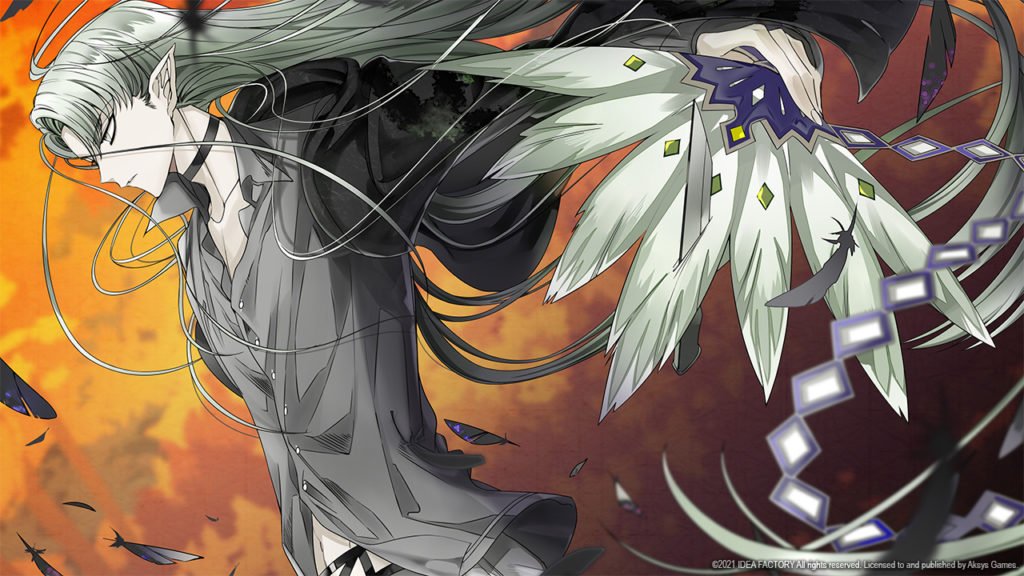
The return of artist Suoh — best known as the character designer on Vita exclusive otome Bad Apple Wars — is a welcome sight indeed, and they deliver with unique, memorable and appealing characters. Once again, the side characters really shine here.
The theme of traditional Japanese culture is lovingly presented through many of the game’s design choices — including background music tracks, location names and designs and even some characters being references to real figures such as Oda Nobunaga.
Probably the greatest issue with the system side of things in Dairoku: Agents of Sakuratani is the underutilisation of its glossary. The game chucks you in at the deep end with a load of exposition from the get-go, and the glossary never does enough to explain all the terms and references across the 35 hours of playtime. Since the game is very much based on Japanese culture, you may find yourself stumbling on terms the glossary does not cover — and this can break the immersion when having to search up the meaning yourself.
Obviously this may not have been an issue for the original Japanese audience, but it’s definitely something worth considering with regard to the localised version.
Speaking of which, Dairoku: Agents of Sakuratani has a good localisation, albeit with a few mistakes here and there including the usual typos, incorrect grammar, and a few awkward sentences.
This is unfortunately not all that uncommon for localised visual novels, but it bears repeating: Dairoku: Agents of Sakuratani, like many other visual novels and otome titles could have done with a good once-over from some proofreaders and editors, but this is a side of things that often feels like it’s skimped on a bit.
All that said, it’s by no means unplayable, and is of the same quality as their most recent release of Olympia Soiree.
Verdict
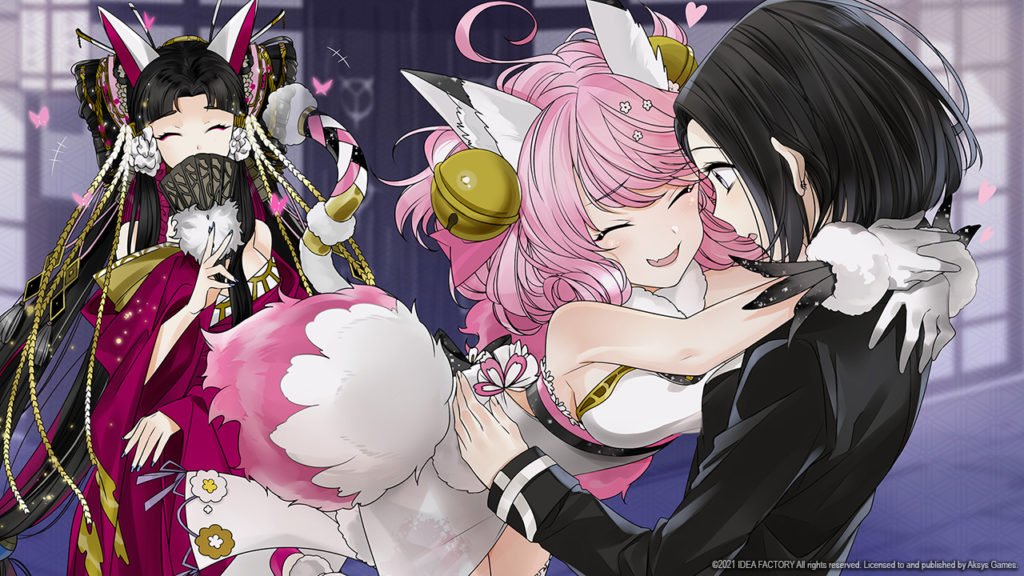
There is so much potential here, especially with regards to the characters and premise, but the game ultimately falls short by mishandling its romantic aspect, and by failing to provide satisfying routes with a conclusive story.
Plot threads came across as highly inconsequential — the game could be summed up with this word alone at this point — in far too many instances, and the world-building could have been far better simply by having exploring the setting in much more depth.
With all this in mind, Dairoku: Agents of Sakuratani ended up being a particularly slow playthrough for me due to its many shortcomings. But it has plenty of aspects to compliment.
Notably, it has some emotional bad endings that do not enter the realm of being distressing or depressing — so unlike the wild rides that are Piofiore: Fated Memories and Olympia Soiree, anyone who is looking for a somewhat lighter otome with less drama and tension should consider this. It’s predominantly light-hearted with hints of a darker edge and tone to it — but it never goes too far. This is something that will either please or displease potential readers depending on their own preferences!
For the otome veteran, Dairoku: Agents of Sakuratani leaves much to be desired. Unlike the very best otomes I’ve experienced on the Switch, such as Cupid Parasite and Café Enchanté, I already know that I will not be replaying this one in the future. It did offer a solid amount of hours while it lasted, though, which is something I appreciated.
If you’re desperate for a new otome title, I recommend grabbing this one on sale, and go into it knowing that it is not action-packed nor story-heavy to avoid any disappointment. Otherwise, I’d say prioritise the other commercial otome titles on Switch if you’re looking to build your collection — particularly if your library currently lacks the most highest rated games in the genre.
Join The Discussion
Rice Digital Discord
Rice Digital Twitter
Rice Digital Facebook
Or write us a letter for the Rice Digital Friday Letters Page by clicking here!
Disclosure: Some links in this article may be affiliate links, which means we may earn a small commission if you make a purchase after clicking on them. This is at no additional cost to you and helps support Rice Digital!
- Sigh of the Abyss: Shadow Bonds – Prologue Review - October 7, 2023
- Is She The Wolf? is wickedly addicting TV - October 6, 2023
- The steady consumption of Slow Damage - October 5, 2023




